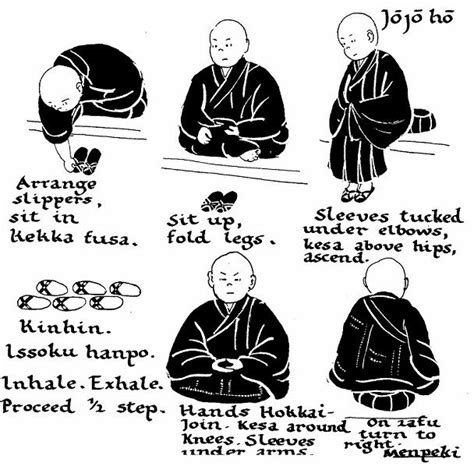Understanding Soto Zen: Hall Etiquette
Soto Zen, a school of Buddhism emphasizing direct experience and zazen (seated meditation), places significant importance on the practice of mindfulness, extending even to the seemingly mundane aspects of temple life. Proper etiquette within the zendo (meditation hall) isn't merely about formality; it's an integral part of cultivating the mindful awareness central to the Soto Zen practice. Understanding and observing these customs helps create a respectful and conducive environment for everyone's spiritual journey.
What is the Purpose of Zendo Etiquette?
The etiquette observed in a Soto Zen zendo isn't arbitrary. It serves several key purposes:
-
Cultivating Mindfulness: Even seemingly small actions, like entering and exiting the hall or the way you bow, become opportunities for mindful practice. Each movement is deliberate, fostering presence and awareness.
-
Respect for the Practice: The rules reflect respect for the tradition, the Buddha, and fellow practitioners. Maintaining silence and order helps create a space conducive to deep meditation.
-
Creating a Shared Atmosphere: Consistent etiquette fosters a sense of community and shared practice. It allows practitioners to focus on their meditation without distraction.
-
Preparation for Zazen: The rituals associated with entering and leaving the zendo help practitioners transition mentally and physically into and out of the meditative state.
Entering and Leaving the Zendo: A Step-by-Step Guide
Entering and exiting the zendo are significant moments in the practice. Here's a general guide; specifics may vary slightly between temples:
-
Entering: Approach the zendo quietly and respectfully. Remove your shoes at the designated area. Bow before entering the hall, showing respect for the sacred space. Find a cushion and sit quietly, preparing your mind for meditation.
-
Sitting: Sit in seiza (formal seated position) if you are able; otherwise, find a comfortable meditative posture. Maintain stillness and awareness of your breath.
-
During Zazen: Remain still and silent throughout the meditation session. Avoid any unnecessary movements or distractions.
-
Leaving: At the end of the session, sit quietly until everyone is finished. Slowly and gently rise from your cushion. Bow before leaving the zendo, expressing gratitude for the practice. Put your shoes back on quietly and respectfully.
What to Wear to a Soto Zen Zendo?
While there isn't a strict dress code, modest and comfortable clothing is generally preferred. Avoid clothing that is overly revealing or distracting. Loose, comfortable clothing allows for ease of movement and helps maintain a sense of calm. Layers are helpful as temperatures in a zendo can fluctuate.
Common Zendo Etiquette Considerations:
What if I need to leave during zazen?
If you must leave during zazen due to an emergency, try to do so as quietly and unobtrusively as possible. Avoid disrupting others in their meditation.
Is there a specific way to bow in a Zendo?
The traditional bow in Zen is a Gassho, palms together at chest level, bowing from the waist. The depth and duration of the bow vary depending on the context. Observing others and learning from experienced practitioners is beneficial.
What is the significance of the bell ringing during zazen?
The bell signals the beginning and end of zazen periods, marking a transition in the practice. It’s a cue to focus the mind and to bring awareness to the present moment.
What should I do if I accidentally make noise during zazen?
If you inadvertently make a noise, try not to react or draw attention to it. Simply resume your meditation practice. The goal is to maintain composure and avoid further disruption.
Beyond the Basics: Cultivating Mindfulness in Daily Life
The etiquette of the zendo is a microcosm of the broader Soto Zen practice. The mindful awareness and respect cultivated in the hall are meant to be carried into daily life, influencing our interactions with others and our approach to all experiences. Understanding and practicing these customs not only enhances the zendo experience but also deepens one's understanding and appreciation of the Soto Zen path. By consistently embodying these principles, we create a space of peace, respect, and shared practice for ourselves and others.

